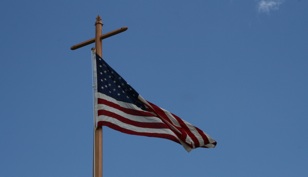Ernie Swann served with the "Fighting 69th".
165th Infantry of the 27th Infantry Division.
Pacific Theater. Island hopping toward Japan.
He was a Forward Observer for the Artillery units.
History
The 165th Infantry Regiment, originally the famous 69th New York Infantry or the “Fighting Irish” traces its roots all the way back to 1775. The first elements of the Regiment fought throughout the Revolutionary War and later became Company A of the 69th New York Infantry. Since its inception, the 69th served in the Civil War, the Spanish-American War, the Mexican Border dispute of 1916, World War I, and World War II. The long legacy of the 69th, and then the 165th has earned the Regiment fifty-two battle rings on its flag, more than any other United States Army Regiment. During World War II the 165th contained 12 companies, all of which were recruited solely from New York City.
The 165th Infantry was inducted into federal service at New York, NY and assigned to the 27th Division on October 15th 1941. Following its induction, the Regiment was moved to Fort McCllelan, AL on the 26th of October 1941. The 165th departed for Hawaii on March 30th 1942 and arrived there on April 8th 1942. The 165th landed on Butaritari, the principle island in the Makin Atoll on November 20th 1943. The 1st and 3rd battalions landed first, coming ashore on the western end of the island in the face of negligible resistance. This was fortunate as the western beaches were worst encountered by the 27th Division at anytime in the war. The two battalions pushed inward quickly to their beachhead positions and halted to wait for the 2nd battalion landing. Once the 2nd battalion had secured their beachhead, the three battalions, with the help of the 105th Infantry’s 3rd battalion squeezed the Japanese garrison into a pocket and eventually reduced it. Following the successful reduction of the Makin garrison, the 165th returned to Hawaii on December 2nd 1943 sans the 3rd battalion, which remained behind as a temporary garrison. The 3rd battalion returned to Hawaii on January 1st 1944. The Regiment left Hawaii on May 31st 1944 with the 105th Infantry and landed on Saipan on June 17th 1944. The 165th immediately assaulted Saipan’s airstrip, known locally as Aslito Field, pushing over the tarmac and attacking the prime Japanese defensive works on Ryan’s Ridge to the South East of the field. The 165th broke the defenses on the ridge on the 18th after a day of brutal and confused fighting, allowing the capture of Aslito Field. Following the capture of the airfield the 165th, after a brief attack on Nafutan Point, was sent to bolster the line of the 4th Marine Division. The 165th was involved in bitter fighting around Mount Tapotchau, Purple Heart Ridge, and Death Valley, fighting with the 106th Infantry in an attempt to break these, the island’s last and strongest defensive positions. The 165th eventually finished off the last organized resistance on Saipan, effectively ending the battle.
The Regiment arrived at Espiritu Santo on September 4th 1944 to rest and refit, and departed March 25th 1945 to participate in the Okinawa campaign. The 165th landed on Okinawa on April 9th 1945. The Regiment was responsible for the reduction of the area known as Item Pocket, which was a system of Japanese defenses that were constructed to prevent the capture of Okinawa’s principle airfield, at Machinato. Item Pocket was eventually overrun when the 165th captured a ridge dubbed Ryan’s Ridge, after a different officer than the one who had given leant his name to the terrain on Saipan. With the fall of this ridge, Item Pocket’s defenses were cracked open and the 165th was able to capture the Machinato airfield. The fighting had been heavy and the cost high, but the 165th was done with anything more than mop up activities following the fall of the airfield. Following its departure from Okinawa, the 165th arrived in Japan for garrison duties on September 12th 1945. It was deactivated on December 31st 1945 following its return to the states.
